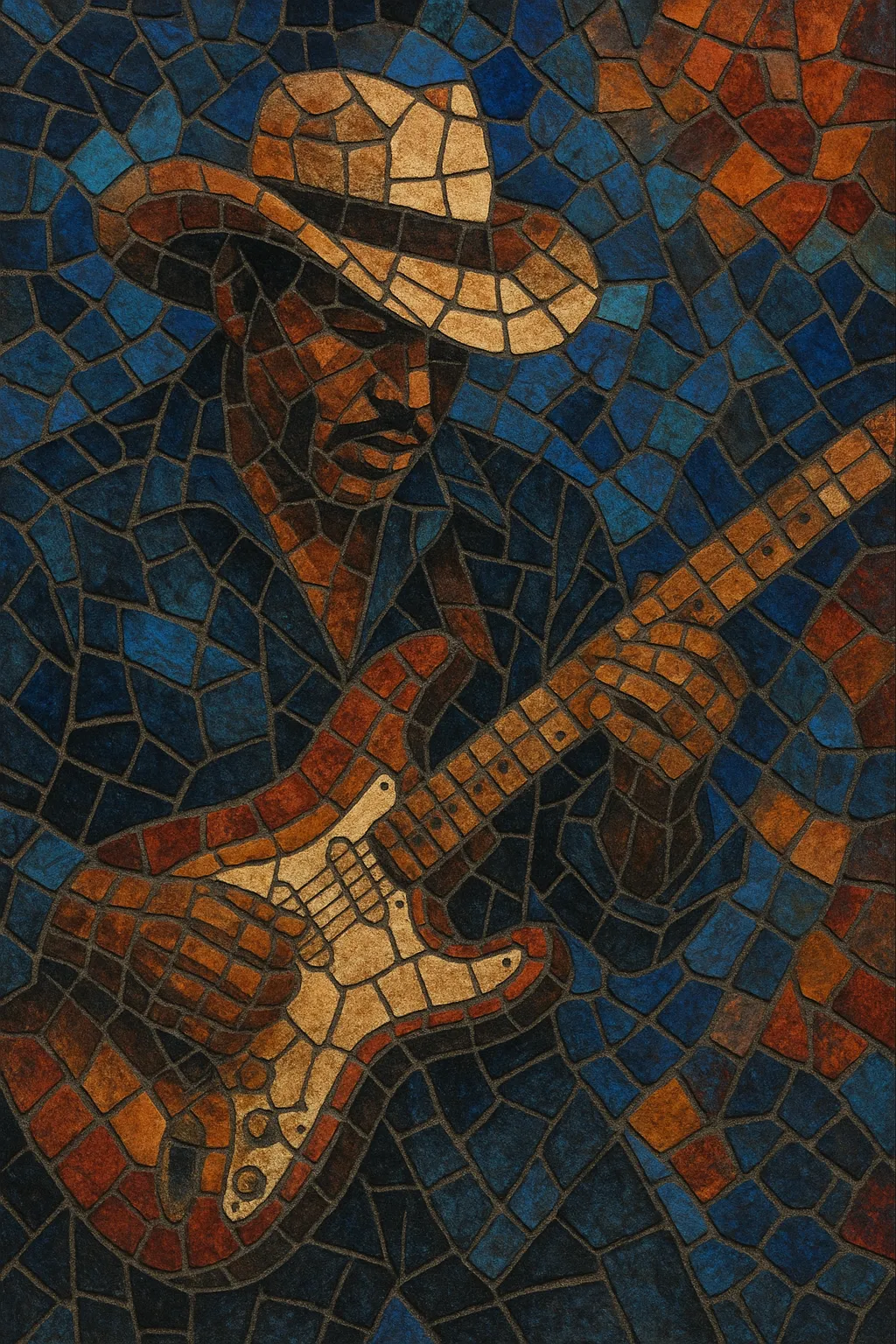
Electric Texas blues is the amplified, urbanized form of Texas blues that took shape in the mid-20th century. It centers the electric guitar as a lead voice and blends Texas blues phrasing with swing, jump-blues, and jazz harmonies.
Hallmarks include a supple shuffle or 12/8 triplet feel, crisp single‑note lead lines, expressive string bends and wide vibrato, and frequent use of dominant 9th/13th chord colors. Compared with Chicago blues, it is often looser and more swinging, with room for jazzy turnarounds and horn-like guitar phrasing. Lyrics typically address love, nightlife, bragging, and hard-won resilience.
From T-Bone Walker’s cool sophistication to the fiery attack of Freddie King and the stinging, reverb‑kissed tone of Albert Collins, the style has remained a cornerstone of modern electric blues and a direct conduit to blues-rock.
Texas-born innovators electrified a regional country-blues vocabulary with big-city polish. Aaron “T-Bone” Walker emerged as a template: his 1940s sides, including the seminal “Call It Stormy Monday (But Tuesday Is Just as Bad)” (1947), showcased horn-like single‑note guitar lines, jazz-inflected chords, and suave phrasing. Although many sessions were cut in Los Angeles, the players and idiom were firmly tied to Texas traditions.
The sound spread through Gulf Coast circuits and beyond, intersecting with swing, jump blues, and early R&B. Clarence “Gatemouth” Brown mixed fiddling flair with electric guitar bite; Pee Wee Crayton brought a taut, bright attack; and Lightnin’ Hopkins adapted his rural Texas style to electrified settings. In the 1960s, Freddie King’s instrumentals (“Hide Away,” “The Stumble”) became canon, and Albert Collins’s icy Telecaster tone (“Frosty”) defined another distinct Texas voice.
As rock audiences embraced the blues, Texas players bridged traditions. Johnny Winter pushed high-energy, virtuosic blues-rock. In Austin, a club ecosystem nurtured the style’s revival; Stevie Ray Vaughan and Jimmie Vaughan renewed mass interest with tough shuffles, sleek jazz turnarounds, and searing Stratocaster tones—SRV’s Texas Flood (1983) became a touchstone.
The idiom remains vibrant in Texas venues and global festivals. Artists such as Gary Clark Jr. fold soul, rock, and modern production into the Texas palette while keeping the rhythmic swagger and guitar-first focus intact. The style continues to inform blues-rock, roots rock, and the broader vocabulary of electric blues guitar.

